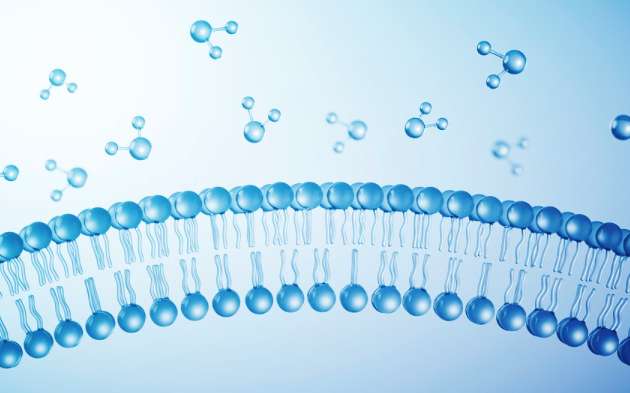Many drugs undergo metabolism as a major mechanism of bioactivation or clearance from the body. Drug metabolism occurs primarily through the CYP450 family of enzymes. Therefore, it is important to assess the metabolism-mediated drug interactions of test compounds on CYP450 enzyme activity. Inhibition of CYP450 enzymes may result in clinically relevant drug-drug interactions (DDI). Depending on the mechanism of inhibition, the inhibitory effect of a drug on CYP450 enzymes can be classified as reversible inhibition or irreversible inhibition (Figure 1).
In general, Time-dependent Inhibition (TDI) results from irreversible covalent binding or quasi-irreversible non-covalent tight binding of a chemically reactive intermediate to the enzyme that catalyzes its formation, resulting in a loss of enzyme function. Metabolism-mediated drug-drug interactions resulting from TDI can display a delayed onset due to the time dependence on inhibition and can persist even after the inhibitor has been eliminated because enzymatic activity is only restored by de novo protein synthesis. Therefore, TDI has gained increasing attention from regulatory agencies and drug developers over the years. Industrial white papers or guidelines have been issued by organizations, such as Pharmaceutical Research and Manufacturers of America (PhRMA), the Food and Drug Administration (FDA), the European Medicines Agency (EMA), and the National Medical Products Administration (NMPA). These guidelines state that TDI studies on the seven major drug-metabolizing CYP450 enzymes should be conducted in standard in vitro ADME studies. This article introduces a novel in vitro research approach for assessing TDI, known as the area under the curve (AUC) shift approach. This approach could overcome the limitations of the IC50 shift method in evaluating the TDI potential of the compound of interest, aiming to provide more accurate data and facilitate drug development processes.

Figure 1. Types of enzyme-related drug-drug interactions
The limitations of the traditional approach in the evaluation CYP450 TDI
Typically, the IC50 shift fold of a compound against CYP450 enzymes after pre-incubation with and without NADPH is used to assess the TDI effects. A compound is considered to exhibit TDI effects (i.e., mechanism-based inhibition) when the IC50 shift fold is ≥ 1.50. However, it is not possible to generate the IC50 shift fold sometimes, making it difficult to accurately assess a compound’s TDI effect.
The in vitro ADME team of WuXi AppTec DMPK has identified three classic scenarios in which it is difficult to obtain the IC50 shift fold. These scenarios are as follows:
-
The IC50 shift fold of the test article falls within a range of > 0 to 1.50 (Figure 2a).
-
The solubility of the compound is limited (the original maximum test concentration is 50.0 μM), making it difficult to obtain IC50 values of the test article (Figure 2b).
-
The compound is a weak mechanism-based inhibitor and it is challenging to obtain IC50 values under the conditions tested (Figure 2c).

Figure 2. Three scenarios where an accurate IC50 shift fold cannot be obtained
The accurate assessment of the TDI effects of compounds is crucial in drug discovery. If the compounds cannot be ranked order or compared based on in vitro TDI data, it will not help in decision-making. Therefore, it is necessary to find a novel and quantifiable method for assessing the TDI effects of compounds during the drug development process. In this case, the AUC shift approach draws attention. This approach assesses the TDI effects of compounds by determining the AUC shift of the inhibition of CYP450 enzymes during pre-incubation, with and without the presence of NADPH, thereby enhancing the in vitro TDI research on CYP450 enzymes and providing a basis for predicting clinical DDI risks.
Establishment of the AUC Shift Approach in the evaluation CYP450 TDI
The IC50 shift and AUC shift approaches share the same study design experimental conditions. However, their subsequent approach to data processing is different. Thus, determining the cut-off value that could assess the TDI effects of compounds is crucial for establishing the AUC shift approach, which can be divided into two steps:
Firstly, 27 commercially available compounds, which have been known as strong, moderate, weak, or no TDI inhibitors for each of the seven CYP450 enzyme subtypes, are selected based on the literature data.
Secondly, the IC50 shift fold and AUC shift value of those selected compounds are calculated separately. Additionally, the cut-off value of the AUC shift approach needs to be confirmed according to whether the compound exhibits the TDI effects. The corresponding IC50 shift fold value serves as evidence of establishing a stable, reliable, and reproducible AUC shift platform.
The results of the AUC shift approach for commercial compounds with TDI effects
We determined the AUC shift value of 27 commercially available compounds (strong, moderate, weak, and no TDI effects) on human liver microsomal CYP450 enzymes (CYP1A2, CYP2B6, CYP2C8, CYP2C9, CYP2C19, CYP2D6, and CYP3A), and compared the results with the published values in the literature. Based on whether the compounds exhibited TDI effects and the calculated AUC shift values, the AUC shift value of 15.0% was identified as the cut‑off. The following results of CYP3A (with midazolam as the substrate), CYP2C9, and CYP2C19 are presented as cases (Tables 1, 2, and 3).
Case 1: Ketoconazole and troleandomycin are recommended by the FDA and NMPA as the positive controls for determining the reversible and time-dependent inhibition of CYP3A, respectively. The IC50 shift fold and AUC shift (%) values of these compounds were consistent with the data published in the literature, and the results aligned with the recommendations of the FDA and NMPA (Table 1).
|
Enzyme |
Inhibitor |
IC50 Shift Fold and AUC Shift (%) |
AUC Shift (%) vs. Published Data [1] |
|
CYP3A |
Ketoconazole |
< 1.50 and < 15.0 |
|
|
Troleandomycin |
> 1.50 and > 15.0 |
|
Table 1: TDI of ketoconazole and troleandomycin by IC50 shift fold and AUC shift methods
Note: The blue dots and blue lines represent the average values and standard deviations of WuXi AppTec’s measurements, respectively (n = 3), while the orange dots and orange lines represent the average values and standard deviations reported in the literature, respectively (n = 10).
Case 2: Sulfaphenazole and tienilic acid are recommended by the FDA and NMPA as the positive controls for assessing the reversible and time-dependent inhibition of CYP2C9, respectively. The IC50 shift fold and AUC shift (%) values of these compounds were close to the values reported in the literature, and the results were consistent with FDA and NMPA recommendations (Table 2).
|
Enzyme |
Inhibitor |
IC50 Shift Fold and AUC Shift (%) |
AUC Shift (%) vs. Published Data[1] |
|
CYP2C9 |
Sulfaphenazole |
< 1.50 and < 15.0 |
|
|
Tienilic acid |
> 1.50 and > 15.0 |
|
Table 2: TDI of Sulfaphenazole and tienilic acid using IC50 shift fold and AUC shift methods
Note: The blue dots and blue lines represent the average values and standard deviations of WuXi AppTec’s measurements, respectively (n = 3), whereas the orange dots and orange lines represent the average values and standard deviations published in the literature, respectively (n = 10).
Case 3: (+)-N-3-Benzylnirvanol and ticlopidine are recommended by the FDA and NMPA as the positive controls for assessing reversible and time-dependent inhibition of CYP2C19, respectively. The IC50 shift fold and AUC shift (%) values of these compounds were close to the values reported in the literature, and the results were consistent with FDA and NMPA recommendations (Table 3).
|
Enzyme |
Inhibitor |
IC50 Shift Fold and AUC Shift (%) |
AUC Shift (%) vs. Published Data[1] |
|
CYP2C19 |
(S)-(+)-N-3-Benzylnirvanol |
< 1.50 and < 15.0 |
|
|
Ticlopidine |
> 1.50 and > 15.0 |
|
Table 3: TDI of (+)-N-3-Benzylnirvanol and ticlopidine using IC50 shift fold and AUC shift methods
Note: The blue dots and blue lines represent the average values and standard deviations of WuXi AppTec’s measurements, respectively (n = 3), while the orange dots and orange lines represent the average values and standard deviations published in the literature, respectively (n = 10).
The measured values for our standards were close to the values published in the literature (within two-fold). We also calculated the IC50 shift fold of the inhibitor data as above and compared them with the AUC shift (%) value. The results from both approaches were identical. This demonstrates that we have established a new reliable approach (the AUC shift approach) to study TDI against CYP450 in vitro.
Applications of the AUC Shift Approach for evaluating TDI effects
Case 1: For compound A, an IC50 shift fold of > 1.33 was obtained, making it difficult to accurately determine whether the compound exhibits TDI effects. However, a specific value could be obtained by the AUC shift approach, which enables a more accurate assessment of the TDI effects (Figure 3).

Figure 3. Evaluation of a compound with IC50 shift fold as range values using the AUC shift method
Case 2: For compound B, it was difficult to obtain the IC50 value due to the limited solubility with the original maximum test concentration of 100 μM. Therefore, the IC50 shift fold could not be calculated, making it challenging to determine whether the compound exhibits TDI effects. However, the AUC shift approach could provide specific values and accurately assess the TDI effects (Figure 4). This aligns with the actual characteristics of the compound (lower activity percentage of the vehicle control at the highest concentration tested in the +NADPH group; significant deviation of the two curves in the -NADPH and +NADPH groups).

Figure 4. Evaluation of solubility-limited compounds using the AUC shift approach.
Case 3: For compound C (weak time-dependent inhibitor), the IC50 shift fold was unable to be calculated, making it difficult to determine whether the compound exhibits TDI effects. However, a specific value can be obtained from the AUC shift approach and assessing the compound’s TDI effects (see Figure 5). This also aligns with the compound’s actual characteristics (lower activity percentage of the vehicle control at the highest concentration tested in the +NADPH group; significant deviation of the two curves in the -NADPH and +NADPH groups).

Figure 5. Evaluation of weak TDI compounds using the AUC shift approach.
The AUC shift approach can address the issues that cannot be solved using the IC50 shift approach, allowing for a more accurate determination of the TDI effects of compounds. This provides a basis for the clinical study design of test articles.
Conclusion
The AUC shift approach has proven to be a novel quantitative method for the in vitro evaluation of TDI. Based on the extensive experience and the introduction of new tools, we could combine the IC50 shift and AUC shift to determine the TDI effects of compounds, providing crucial evidence for the structural optimization of lead compounds and the clinical study design of candidate compounds. A comprehensive decision tree mechanism and improving TDI research, providing evidence for predicting clinical DDI risks.
Click here to learn more about the strategies for in vitro ADME, or talk to a WuXi AppTec expert today to get the support you need to achieve your drug development goals.
Author(s): Jianlan Li, Lifang Jiang, Genfu Chen
Committed to accelerating drug discovery and development, we offer a full range of discovery screening, preclinical development, clinical drug metabolism, and pharmacokinetic (DMPK) platforms and services. With research facilities in the United States (New Jersey) and China (Shanghai, Suzhou, Nanjing, and Nantong), 1,000+ scientists, and over fifteen years of experience in Investigational New Drug (IND) application, our DMPK team at WuXi AppTec are serving 1,500+ global clients, and have successfully supported 1,200+ IND applications.
Reference
[1] Mukadam S, Tay S, Tran D, Wang L, Delarosa EM, Khojasteh SC, Halladay JS, and Kenny JR. Evaluation of time-dependent cytochrome P450 inhibition in a high-throughput, automated assay: introducing a novel area under the curve shift approach. Drug. Metab. Lett, 2012, 6 (1): 43-53.
Stay Connected
Keep up with the latest news and insights.



















